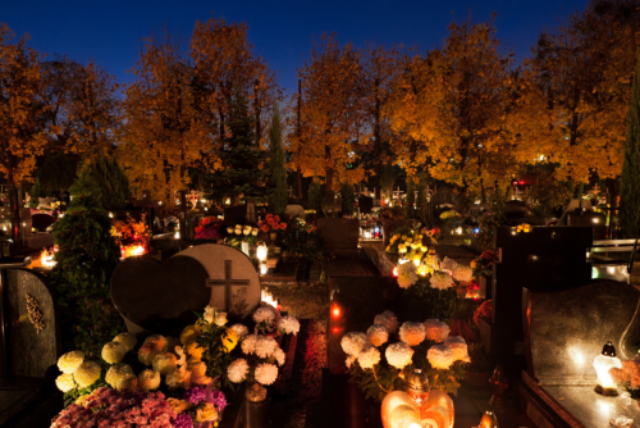A Guide to Overseas France
Posted by Josh on 10th Sept 2024 in the blog in the french culture category
Did you know that France has more time zones than any other country in the world? That’s because French territory is not just confined to what is known as Metropolitan France, but also extends to 13 departments and regions overseas. Known collectively as Overseas France, or sometimes by the acronym DROM-COM (‘Overseas Departments and Regions – Overseas Collectivities’), these regions span the globe, from the Caribbean to the Antarctic, from the Indian Ocean to Polynesia.
French Guiana
Sharing a border with Suriname to the west and Brazil to the south, French Guiana is France’s largest region after Nouvelle-Aquitaine, and by far the largest department. French colonies were established in the region as early as 1503, and unlike British Guyana, which gained independence in 1966, French Guiana opted to become a department of France after the Second World War, and remains so to this day.
Despite its location in South America, it is home to Europe’s Spaceport, thanks largely to its proximity to the Equator. The space agency is a major contributor to the French Guianan economy. French Guiana is also home to one of the longest carnivals in the world, which runs from the Epiphany (6th January) to Ash Wednesday (late February or early March), which is celebrated with colourful Paré-masqué parades and touloulou dances.
Guadeloupe
Guadeloupe is an archipelago in the Lesser Antilles. Known as Karukera (or "The Island of Beautiful Waters") by the native Arawak people, this overseas department takes its name from the Spanish town of Guadalupe, although the spelling was changed when it became a French territory in 1674.
It is the most populous of France’s overseas territories, with close to 400,000 inhabitants spread across six islands (although many more are uninhabited). Perhaps unsurprisingly, Guadeloupe is a highly popular tourist destination, known for its breathtaking beaches and tropical climate.
Martinique
With a population of 350,000, Martinique is one of the most populous overseas departments of France. The island in the Lesser Antilles enjoys a rich musical heritage and is the home to genres such as bèlè, zouk, and biguine. It’s also well known for its cuisine, a hybrid of French, Careb Amerindian, Indian and African foods, and its literary figures include Aimé Césaire, René Ménil and Yva Léro.
Saint-Barthélemy
Also known as St Barts in English or St Barth in French for short, Saint Barthélemy is a volcanic island in the Caribbean. Though it has a small population of around 10,000 people, it has a vibrant culture, and annual festivities include a yachting race and a music festival. For a while it was the only Swedish colony in the Caribbean, although a referendum in 1877 returned it to French rule. A further referendum in 2003 granted the island independence from Guadeloupe.
Saint-Martin
The island of Saint Martin is divided between French and Dutch authority, which can lead to some confusion. The southern half of the island, Sint Maarten, is part of the Kingdom of the Netherlands, while the northern half, known officially as ‘The Collectivity of Saint Martin’, is a French overseas territory. Due to its mixed governance and history, the island is a melting pot of cultures, with Asian, Creole, Dutch and French influences - a fact which is just as true for the French half as for the Dutch.
Saint Pierre and Miquelon
Located just off the Canadian province of Newfoundland and Labrador, Saint Pierre and Miquelon is a remnant of New France, the former French territory that once stretched across North America. It’s one of the colder territories on this list, with average temperatures of 17 degrees Celsius in August, the warmest month. But it’s also a breathtaking place with distinctive colourful buildings and amazing seafood cuisine, making it a popular tourist destination.
Mayotte
To the Northwest of Madagascar lies Mayotte. The island has been occupied by various different powers over the course of its history, including Bantu Africans, Arabs and the Malagasy, before finally falling to the French in 1841. Unlike the other largely Christian departments on this list, it has a majority Muslim population.
The official language is French, but Shimaore and Kibushi are also widely spoken. Bi- and trilingualism are common among the citizens of Mayotte.
Reunion island
Part of the Mascarene Islands, this island off the coast of Madagascar is well-known for its volcanoes. Piton de la Fournaise is one of the most active volcanoes in the world, making it dangerous to live in the vicinity, but also of intense interest to scientists. It’s also one of the most biodiverse places in the world, with stunning coral reefs and its own ecosystem of unique plants and animals, such as the Mauritian flying fox and the panther chameleon.
French Polynesia
A very popular tourist destination, French Polynesia is comprised of 121 islands and atolls, including the island of Tahiti, and is one of the larger of France’s overseas collectivities. The islands have been inhabited for thousands of years, and with such lush forests and stunning, crystal-blue coastlines, it’s easy to see why many French Polynesians would never want to leave.
New Caledonia
Named New Caledonia by the British explorer James Cook, owing to the fact that the island reminded him of Scotland, this archipelago in the Pacific Ocean enjoys a much warmer and more tropical climate than its European namesake. The main island is Grand Terre, where the capital, Nouméa, is located. Popular among bird-watchers and whale-watchers, New Caledonia is home to numerous native species of all sorts of animals.
Wallis and Futuna
Wallis and Futuna are two islands in the South Pacific, although the collectivity also includes the largely uninhabited Alofi island. In 1887 and 1888 respectively, the queen of Wallis and the kings of Futuna and Alofi signed treaties with France, bringing the islands under French rule. In 1959, Wallis and Futuna voted to be separate from New Caledonia. The islands are known for their outstanding natural beauty.
Clipperton island
By far the smallest territory on this list, comprising less than 3.5 square miles of land, Clipperton Island is an uninhabited atoll in the Pacific Ocean. Though it’s uninhabited, its unique position means it has historically been of strategic value, and the Americans even occupied the island briefly during the Second World War as an outpost from which to combat the Japanese navy.
French Southern and Antarctic Lands
The French southern and antarctic lands refers to a disparate group of islands in the Indian and Antarctic Oceans, namely the Crozet Islands, the Kerguelen Islands, the Scattered Islands and Saint Paul and Amsterdam Islands. The territories are uninhabited, and the only people living on these islands at any time tend to be military personnel or scientists for research purposes.
Check out some of our other blog posts!
How to get top marks in the French GCSE
Posted on by Josh in the french gcse categoryGet the best grades you can
Read moreLa Toussaint
Posted on by Josh in the french culture categoryLearn about how All Saints' Day is celebrated in France
Read moreHave fun learning French Today
People from all over the world enjoy learning French with Alexa Polidoro’s popular French audio and video lessons.







